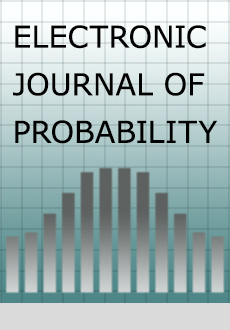Abstract
Sequences of certain finite graphs - special types of antitrees - are constructed along which the Anderson model shows GOE statistics, i.e. a re-scaled eigenvalue process converges to the ${\mathrm{Sine} }_1$ process. The Anderson model on the graph is a random matrix being the sum of the adjacency matrix and a random diagonal matrix with independent identically distributed entries along the diagonal. The strength of the randomness stays fixed, there is no re-scaling with matrix size. These considered random matrices giving GOE statistics can also be viewed as random Schrödinger operators $\mathcal{P} \Delta +\mathcal{V} $ on thin finite boxes in $\mathbb{Z} ^3$ where the Laplacian $\Delta $ is deformed by a projection $\mathcal{P} $ commuting with $\Delta $.
Citation
Christian Sadel. "GOE statistics for Anderson models on antitrees and thin boxes in $\mathbb{Z} ^3$ with deformed Laplacian." Electron. J. Probab. 23 1 - 24, 2018. https://doi.org/10.1214/18-EJP187
Information





